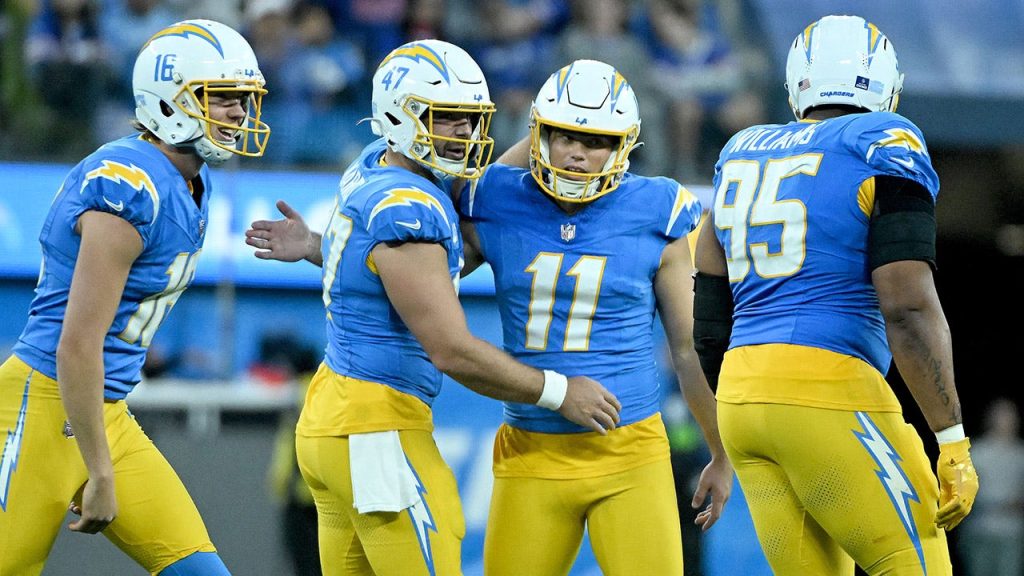Thursday Night Football lived up to its reputation for unexpected twists and turns during the Denver Broncos-Los Angeles Chargers game, showcasing a rare and intriguing play that hadn’t been seen in the NFL for nearly half a century: the fair catch kick. With the clock winding down in the first half and the Broncos comfortably ahead 21-10, a seemingly routine punt turned into a moment of football history. Denver’s attempt to run out the clock backfired when they were flagged for fair catch interference, granting the Chargers a highly unusual opportunity.
The ensuing “fair catch kick” is a little-known rule in football, allowing the receiving team after a fair catch interference penalty to attempt a free kick from the spot of the fair catch. This kick differs from a typical field goal attempt. The ball is placed on a tee, and the kicking team gets a free, unrushed kick at the goalposts. This scenario materialized for the Chargers, with kicker Cameron Dicker lining up for a 57-yard attempt. The situation was so uncommon that confusion reigned on both sidelines, highlighting the rarity of the play. Dicker calmly slotted the kick through the uprights, narrowing the Broncos’ lead to 21-13 as the teams headed into halftime.
The successful fair catch kick was a remarkable feat, etching Dicker’s name into the NFL record books. It marked the 27th recorded fair catch kick in league history, including the postseason, and only the seventh to be successfully converted. The last successful attempt occurred in 1976, ironically by San Diego Chargers kicker Ray Wersching, adding another layer of historical significance to the moment. The previous attempt before Thursday night was in 2019, a missed 60-yarder by Joey Slye. Dicker’s kick also set a new record for the longest successful fair catch kick, surpassing Paul Hornung’s 52-yarder in 1964.
The rarity of the fair catch kick lies in the specific circumstances required for its execution. It can only occur after a fair catch interference penalty, which itself is not a common occurrence. The receiving team must opt for the free kick instead of declining the penalty and taking possession of the ball, a decision that depends on the field position and game situation. The distance of the kick often exceeds typical field goal range, as fair catches usually happen deep in the receiving team’s territory. While nine unsuccessful attempts preceded the Chargers’ successful kick, Dicker’s attempt was relatively short at 57 yards. Fair catch kicks frequently reach distances of 70 yards or more due to the location of the fair catch.
The Broncos-Chargers game provided a captivating illustration of a forgotten rule in football, underscoring the unpredictable nature of the sport. The fair catch kick, a relic from a bygone era, unexpectedly took center stage, reminding fans and players alike of the nuances and complexities that lie within the rulebook. While it might seem like an obscure and inconsequential detail, the fair catch kick can have a tangible impact on the game, as evidenced by Dicker’s successful attempt, which altered the halftime score and potentially influenced the outcome of the game.
The revival of this rarely seen play serves as a testament to the ever-evolving nature of football, where even the most unusual rules can suddenly become relevant and game-changing. Dicker’s kick not only secured his place in NFL history but also reignited interest in a forgotten aspect of the game, sparking conversations and prompting viewers to delve into the intricacies of the rulebook. The Broncos-Chargers game demonstrated that in the NFL, even seemingly routine plays can lead to unexpected moments of excitement and historical significance.

